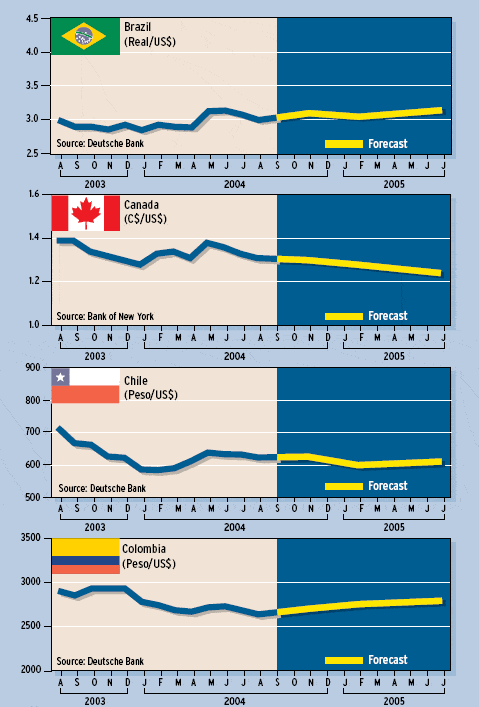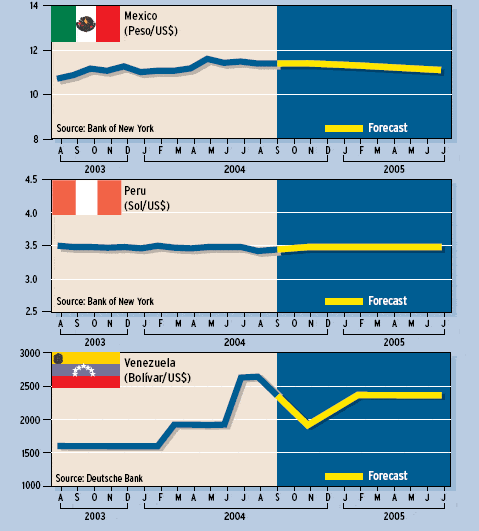The Americas
While the US economy continues to chug along at a respectable pace, the outlook for the dollar remains worrisome in light of the burden of financing the current-account deficit, analysts say.
The deficit is at an unprecedented level, while capital inflows to the US are turning less favorable, says Anne Mills, director of currency research at Brown Brothers Harriman in New York.
The current-account deficit is larger than it has ever been at the start of a Federal Reserve rate-hike cycle,Mills says.
Typically, the current account swings into surplus during a recession, but the US deficit barely improved during the last recession, she says. Now the gap is widening again.
Despite some of the strongest growth among the major economies, the US has not been able to generate renewed international investor interest in US stocks, Mills says.
Stock-market performance generally leads the trend in foreign purchases of US equities, she says. Since stocks were broadly flat during the second quarter of 2004, she adds, there is no reason to expect a sudden increase in inflows to US stocks in the near future.
The latest capital-flow data confirm market suspicions that the US may have difficulty financing its current account deficit in the absence of Asian central bank buying of US treasury and agency bonds, says Michael Woolfolk, senior currency strategist at Bank of New York.
The Bank of Japan, in particular, stopped intervening in the currency markets in late March. It had been recycling billions of dollars acquired in previous interventions into the US treasury bond market.
Foreign appetite for US equities remains decidedly bearish, which is further undermining support for the dollar on a trade and investment flow basis, Woolfolk says.
The dollar fell to multimonth lows in mid-July, when the US Treasury released data showing that net foreign purchases of US stocks and bonds slowed for the fourth consecutive month in May.
Excluding foreign centralbank purchases of US treasury securities, total net inflows in May were well below the trade deficit for the month of $46 billion, says Ashraf Laidi, chief currency analyst at MG Financial Group in New York.
We expect demand for oil imports to resume as the average import price stabilizes, Laidi says. Combined with a possible slowdown in US exports, this could provide for renewed escalation in the trade gap beyond $50 billion a month before the end of this year, an ominous prospect for the dollar, he says.
According to Laidi, declining foreign purchases of US stocks and bonds are raising fresh doubts about the sustainable financing of the widening trade deficit.


Gordon Platt



